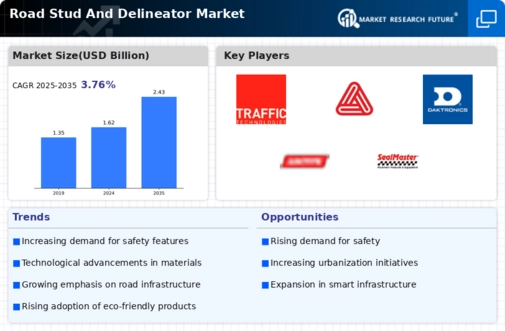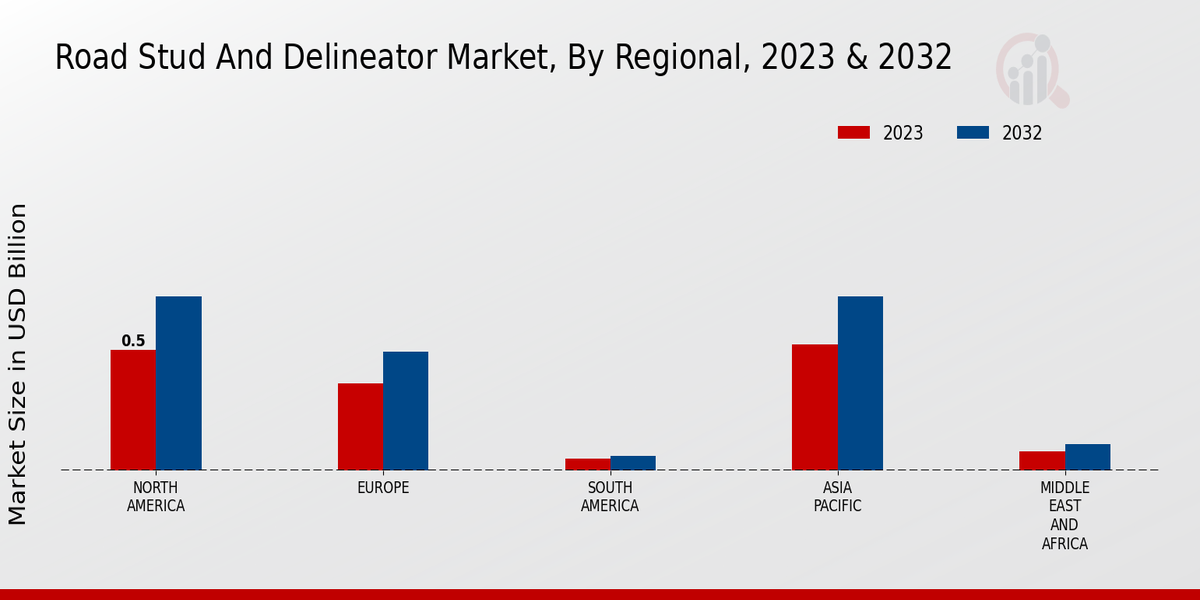Market Growth Projections
The Global Road Stud And Delineator Market Industry is poised for notable growth, with projections indicating a market value of 1.62 USD Billion in 2024 and an anticipated increase to 2.43 USD Billion by 2035. This growth is underpinned by a compound annual growth rate of 3.75% from 2025 to 2035. Such projections reflect the increasing demand for road safety solutions driven by urbanization, regulatory frameworks, and technological advancements. The market's trajectory suggests a robust response to the evolving needs of transportation infrastructure, highlighting the importance of road studs and delineators in enhancing safety and efficiency on roadways.
Growing Awareness of Road Safety
The Global Road Stud And Delineator Market Industry benefits from the growing awareness of road safety among the general public and policymakers. Campaigns aimed at educating drivers about the importance of road markings and delineators are becoming more prevalent. This heightened awareness is leading to increased demand for effective road safety solutions. For example, initiatives in countries like Australia and Canada focus on promoting the use of reflective road studs to reduce nighttime accidents. As public consciousness around road safety continues to rise, the market is likely to see sustained growth, driven by both consumer demand and regulatory support.
Increasing Road Safety Regulations
The Global Road Stud And Delineator Market Industry is experiencing growth due to the increasing emphasis on road safety regulations across various countries. Governments are implementing stricter guidelines to enhance visibility and safety on roadways, which directly influences the demand for road studs and delineators. For instance, countries like the United States and those in the European Union are mandating the use of reflective road markings and delineators to reduce accidents. This regulatory push is expected to contribute to the market's expansion, with projections indicating a market value of 1.62 USD Billion in 2024.
Environmental Sustainability Initiatives
Environmental sustainability initiatives are increasingly influencing the Global Road Stud And Delineator Market Industry. Governments and organizations are prioritizing eco-friendly materials and practices in road construction and maintenance. This shift is prompting manufacturers to develop road studs and delineators using sustainable materials, such as recycled plastics and biodegradable components. For instance, some regions are adopting solar-powered road studs that reduce energy consumption and carbon footprints. As sustainability becomes a key focus in infrastructure projects, the market is expected to evolve, aligning with global efforts to promote environmentally responsible practices.
Urbanization and Infrastructure Development
Rapid urbanization and infrastructure development are significant drivers of the Global Road Stud And Delineator Market Industry. As cities expand, the need for improved road safety measures becomes paramount. Urban areas are increasingly investing in road infrastructure to accommodate growing populations and vehicular traffic. This investment often includes the installation of road studs and delineators to enhance road safety. For instance, emerging economies in Asia and Africa are witnessing substantial infrastructure projects that incorporate these safety features. The anticipated compound annual growth rate of 3.75% from 2025 to 2035 underscores the importance of urbanization in shaping market dynamics.
Technological Advancements in Road Infrastructure
Technological advancements play a crucial role in the Global Road Stud And Delineator Market Industry. Innovations such as solar-powered road studs and smart delineators equipped with sensors are gaining traction. These technologies not only enhance visibility but also improve traffic management and safety. For example, smart delineators can communicate with vehicles to provide real-time information about road conditions. This trend is likely to drive market growth, as stakeholders increasingly adopt advanced solutions to meet modern transportation needs. The market is projected to reach 2.43 USD Billion by 2035, reflecting the impact of these advancements.







